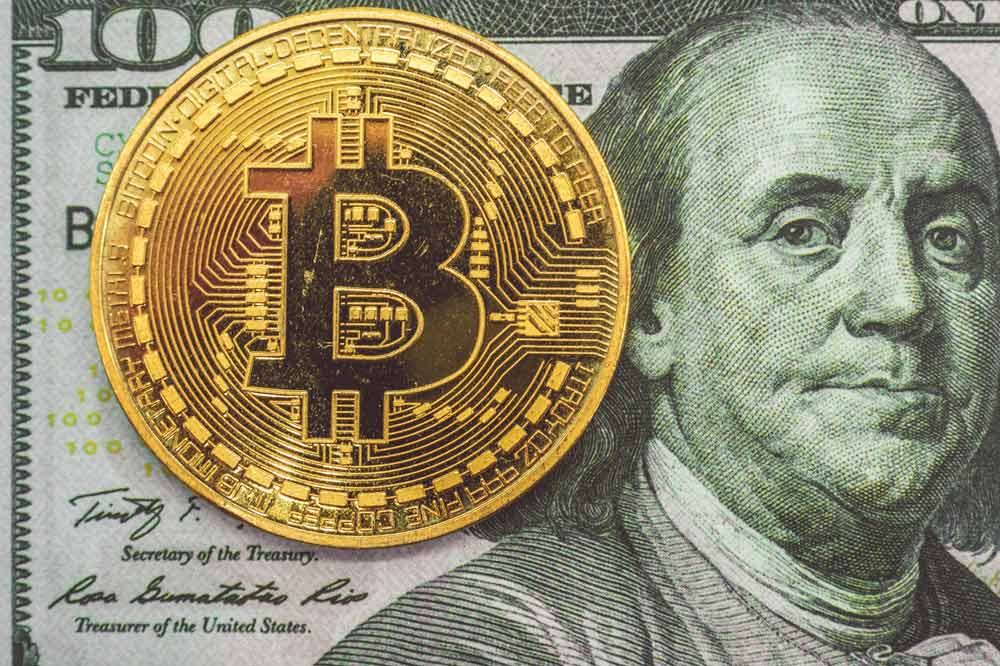Decentralized Finance, more commonly referred to as DeFi, is a movement that merges traditional banking services with decentralized technologies such as blockchain. DeFi is also known as Open Finance as it provides an inclusive format that makes money and payments universally accessible to anyone, irrespective of where in the world you are located.
DeFi aims to create viable alternatives to every single financial service available currently. These services include insurance, asset trading, loans, and checking and savings accounts, amongst others. It is financial software built on the blockchain, that serves as a convenient platform to access any financial service that one would use with as little as a smartphone and internet connectivity.
Importance Of Decentralized Finance
Decentralized Finance’s central objective is to create a financial system that circumvents the reliance and trust of authorities. This is possible by leveraging the internet, cryptography, and blockchain that serves as an enabler to collectively build and control financial systems completely independent of central authorities.
Defi plays a pivotal role in the transformation of the financial industry as it seeks an expansion of the functionality and reach of money. This is made possible with smart contract blockchains such as Ethereum. Smart contracts are essentially programs that operate on the blockchain and are capable of executing automatically once specific conditions have been satisfied.
With a blockchain network, any individual is capable of verifying any transaction that is facilitated on the chain. With smart contracts, developers can create incredibly sophisticated functionality that extends further than merely sending and receiving cryptocurrency. These sophisticated programs are referred to as decentralized applications or dapps.

How Does DeFi Relate To The Ethereum Blockchain?
Most of the DeFi dapps are built on the Ethereum blockchain, incidentally the most popular programmable blockchain globally. Ethereum is principally a blockchain network that maintains a common archive of digital value. As opposed to control from a central authority, users that belong to the network have control of the issuance of ether (ETH), the inherent cryptocurrency of the network, through decentralized means.
Developers have the capability to program applications on Ethereum that can build, store, and manage digital assets (tokens) on the blockchain. These are called smart contracts or decentralized applications and are agreements or contracts that are enforced by the Ethereum blockchain. Another way to interpret it is as applications or scripts that operate only as programmed on the Ethereum network. Developers have the freedom to mitigate the middle man and build complex irreversible agreements on the network.
The amazing thing about decentralized finance is that it has an opportunity to transform the financial industry by introducing greater resilience and transparency to the existing financial system. Anyone who has an internet connection can access and interact with smart contracts that are built on the Ethereum network. Smart contracts are specifically designed to be interoperable and open-source with existing smart contracts. This enables users to easily verify the smart contract’s code and select those services that suit their very needs.
How Do Dapps Work?
DeFi is heavily reliant on dapps. To better understand how the movement works, it is important to learn the dynamics of dapps and how they contribute to the software. Dapps are complex programs specifically designed to function within decentralized networks. These networks can take the form of blockchains, Tor networks, or Distributed Ledgers Technologies (DLT) with the key component of these protocols being their decentralized nature. This basically means that there is no central agency, corporation, or authority that is monitoring or approving the business functions of these applications.
Dapps are relatively self-sufficient and require very minimal human intervention. The beauty of these platforms is that it integrates advanced smart contracts to simplify their business systems. Smart contracts are pre-determined protocols that are programmed specifically to initiate upon receiving cryptocurrency to their address. Incredibly, smart contracts are capable of handling a wide range of tasks that extend from customer approval to facilitating payments.
Key Components Of DeFi

More and more DeFi apps are being introduced and these platforms have been integral in saving money for both business and customers. The impact of the movement has expanded to almost every financial sector and it is important to understand its common characteristics:
No Management Required
The main concept is that these business operations are not managed by any institution or their employees, but rather that the rules are written in coded format ie. a smart contract. When the smart contract is deployed to the blockchain, DeFi dapps can operate independently without the need for human involvement. Developers do, however, involve themselves with the necessary upgrade and bug fixes to the smart contract.
Open-source Code
Anybody can audit the blockchain as the code is open source. This is fantastic for building trust amongst users, as anybody has an opportunity to analyze the blockchain’s functionality security, and/or capabilities. Open-source codes have proven to be remarkably more stable and secure when compared to private codes as there is community interaction. Users feel more confident when transacting on these platforms, as they are not burdened with hidden malicious coding that operates in the background.
Transparency
DeFi has introduced greater levels of transparency. Most DeFi apps operate on public blockchains such as Ethereum, and this indicates that all transactions are available publicly. Incidentally, all activity on the blockchain is for public consumption. Although there may be some concern over privacy, the accounts are pseudo-anonymous, therefore it is not directly linked to a user’s real-life identity but rather lists a numerical address.
Although the accounts don’t indicate the account holder’s name, researchers are capable of finding out the true identity, if absolutely necessary. Additionally, there are programs such as block explorers that are particularly useful in helping to track and trace decentralized transactions for non-privacy focused coins.
Global Reach
Anybody will have access to the very same DeFi services and networks, irrespective of where in the world they are located. Most of the apps running on the software are readily available to anybody who has an internet connection and smartphone, although users must take cognizance of local laws and regulations that might be restrictive.
Decentralized applications have a fantastic ability to provide those without banking access to financial services in an instant. With the current global banking system, almost 40% of the world’s population doesn’t have a proper form of banking. Dapps have certainly closed the gap in enabling the unbanked parts of the world to easily transact.
Permission Free Access

Dapps don’t require users to get permission either to create or participate in decentralized finance. Contrary to traditional finance protocols, there are no gatekeepers or accounts that require lengthy forms. Users have the freedom to interact directly with the smart contracts from their crypto wallets.
Anybody can develop a DeFi application and offer it to the public, without the need for approval from an authority. This is in stark contrast to traditional banking systems that require users to navigate through a myriad of regulations and verification systems to effectively transact.
Flexible User Experience
Users have the flexibility to use third-party interfaces if they are not fond of common dapps. Additionally, they have the flexibility to build their own dapps. With smart contracts, it can be compared to an open API that anyone has the capability to build an app for. Users have substantial options available to them through the integration of third-party application integrations. Users have the freedom to build their own interfaces if the options currently available to them are insufficient.
Interoperable
New DeFi applications can be developed by combining other DeFi products such as stablecoins and decentralized exchanges. Furthermore, prediction markets can be merged to form completely new products. This is a superb feature as it ensures that all the previous work on dapps is not in vain as new developers enter the market. Users can stack DeFi products and earn greater exposure. Single users can now use stablecoins, wallets, and centralized exchanges concurrently, and this possible through an effortless integration of DeFi application processes.
Popular DeFi Applications
There is a multitude of innovative and exciting DeFi products and services that are readily available. Many of these products and services are relatively similar to existing financial products and services but offer a decentralized platform for transacting.
Borrowing and Lending Platforms
Some of the most popular DeFi offerings are borrowing and lending platforms. This, incidentally, is also one of the fast-growing offerings in DeFi’s range. Compared to bank services, users can deposit money and earn interest from other users who borrow their assets. The difference with DeFi, however, is that these assets are digital. The smart contracts embedded help to connect the borrowers to the lenders, administer the terms of the loans, and dispense the interest.
These transactions are seamlessly facilitated without the need for authorities or a middle man bank. This enables lenders to earn much higher returns than they usually would and provides much-needed clarity in understanding the risks through the transparency that the blockchain provides.
Stablecoins

Stablecoins are relatively popular and are referred to as tokens that play a vital role in the ecosystem of DeFi. While many people wrongfully assume that cryptocurrencies are volatile, these stablecoins represent tokens that are meant to maintain a specific value. This is due to those stablecoins pegging itself to a fiat currency or stable assets.
Stablecoin operates on the Ethereum blockchain with DAI and MakeDAO as the backbone. DAI is a stable and decentralized currency that uses a variety of tools to keeps its value in line with the US Dollar. Stablecoins can be categorized into three types:
- Fiat-Collaterized: These are the most popular stablecoins. They are regulatory-compliant and audited coins with a great opportunity for success as active measures have been put in place to maintain the peg. Revenue is generated from interest earned on the deposited funds from users.
- Crypto-Collaterized: These decentralized stablecoins are safeguarded by crypto assets as collateral. They are reliant on trustless issuance and peg against assets through processes such as over-collateralization and incentives. Collateral is held in a smart contract that is only accessible after the stablecoin debt is cleared. It is important to note that this model may collapse based on the volatility of the underlying collateral.
- Non-Collaraterized: These stablecoins are neither over-collateralized nor centralized with crypto assets. It is based on an algorithm where the system supplies more tokens when the demand increases while the price of each token decreases and vice versa to maintain a stable peg. Users must take cognizance of the fact that it is difficult to maintain stability while always contracting the money supply.
Decentralized Exchange
Another popular application from DeFi is the decentralized exchange (DEX). These are typically cryptocurrency exchanges that make use of smart contracts to implement trading rules, execute trades, and securely handle funds. This application also eliminates the need for any authority or middle man bank. When users transact on a DEX, there are no sign-ups, no identity verification, no exchange operator, and no withdrawal fees incurred.
Risks Of DeFi
Like all products that promise a high return, there are always risks involved with innovations such as DeFi. It takes special skills and knowledge to handle cryptocurrencies and financial tools so that in itself is a risky proposition.
The onus is on each user to ensure that their keys and holdings are private and that they use hardware wallets and multi-factor authentication. Furthermore, users must keep up to date with the changing terms of services between the multitude of DeFi products, wallets, exchanges, and crypto projects.
The Bottom Line
The demand for DeFi apps will undoubtedly surge as major systems in our society rapidly shift towards decentralization. DeFi applications, like other modern apps, constantly provide a disruption to existing business systems in this new age. The future is brimming with opportunities as the decentralized applications continue to set standards for the global economy. DeFi dapps certainly have shifted the goalposts and provides an exciting avenue for the financial industry to undergo a remarkable transformation.














